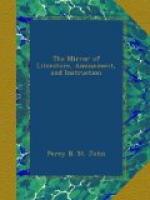The building of Dunheved Castle has been generally attributed to William, Earl of Moreton and Cornwall, the son and heir of Robert, Earl of Moreton, to whom 288 manors in this county were given by William the Norman. “But this opinion is most probably erroneous, as the style of workmanship exhibited in several parts of the remains, is apparently of a much earlier date. The walls of the keep, in particular, have every appearance of being considerably more ancient; and from a retrospective view of the events that have happened in this county, the conjecture appears to be fully warranted, that its foundation is as remote as the time of the Britons, who would undoubtedly endeavour to defend their territory both from Roman and Saxon usurpation, by fortifying the more advanced and important situations. The most therefore that can with certainty be attributed to the above earl, is the repairing and extending the fortifications. Carew, in his Survey of Cornwall, published in 1602, mentions the finding about sixty years before, ’of certain leather coins in the castle walls, whose fair stamp and strong substance till then resisted the assaults of time.’ These singular coins, if they had been preserved or their impressions had been copied, might have thrown some light on the age of the building, as money of similar substance was employed by Edward I. in erecting Caernarvon Castle in Wales, ’to spare better bullion,’[1] Some Roman coins have likewise, according to Borlase, been found in this neighbourhood; so that it is not unlikely that the Romans had possession of this fortress, which, from its situation near the ford of the river Tamar, was a fort of great importance. The earliest historical documents that are known concerning the castle, mention the displacing of Othomarus de Knivet, its hereditary constable, for being in arms against the Conqueror. It was then, as before mentioned, given to Robert, Earl of Moreton, whose son William, kept his court here. From him it reverted to the crown, but continued attached to the earldom of Cornwall till Edward III. when it was constituted and still continues, part of the inheritance of the Duchy. In Leland’s time, several gentlemen of the county held their lands by castle-guard, being bound to repair and defend the fortifications of this castle.[2] During the civil wars, this fortress was garrisoned for the king, and was one of the last supports of the royal cause in this part of the county."[3]




